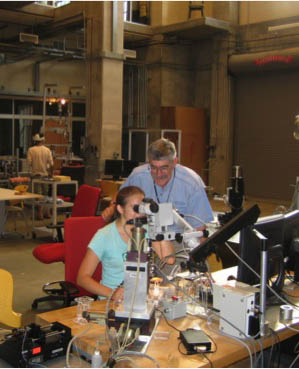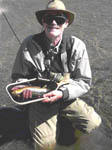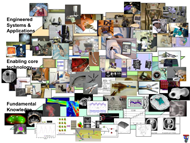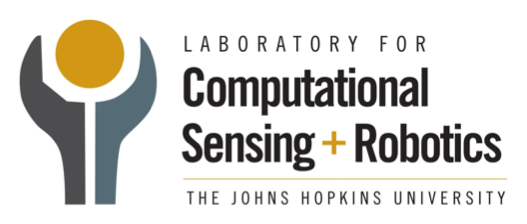Vision: Computer-Integrated Interventional Medicine

Interventional medicine as a closed-loop process: This basic process of 1) combining specific information about the patient with the physician’s general knowledge to determine the patient’s condition; 2) formulating a plan of action; 3) carrying out this plan; and 4) evaluating the results has existed since ancient times. Traditionally, all these steps have taken place in the physicians head. The ability of modern computer-based technology to assist humans in processing and acting on complex information will profoundly enhance this process in the 21st Century. |
For many years, starting in the late 1980's at IBM T. J. Watson Research Center, my research has focused on all aspects of computer-integrated interventional medicine. Broadly, this research has included:
- Medical robotics;
- Medical imaging & modeling;and
- Complete systems for surgical assistance, image-guided surgery, and what I refer to as "Surgical CAD/CAM".
This interest was a natural outgrowth of my earlier experiences in robotics and automation technology groups at IBM T. J. Watson Research Center. Computer-based information processing, design, and process equipment has had a profound effect on high technology industries by enabling "closed loop" process control throughout the all phases of design, manufacturing, distribution, and field support. My basic hypothesis has been that this combination of information-based technologies can have just as profound an impact on computer-integrated medicine as it has had on computer-integrated manufacturing.
My Medical Robotics Work at IBM
My initial explorations in this area were done at IBM Research, spanning a period from the late 1980's to 1995. Follow this link for a description of this work and a short discussion of some of its impact. Briefly, these activities included development of the prototype of what became the Robodoc system for joint replacement surgery, as well as an early navigation system for craniofacial osteotomies. These experiences led me to establish the Computer-Assisted Surgery Group at IBM Research, where research activities included continued development of Robodoc and navigation systems, as well as the LARS system for minimally-invasive surgery, among other work.
Subsequent Work at Johns Hopkins University
I moved to Johns Hopkins in 1995, in large part to be closer to the surgeons, radiologists, and other clinicians who are so crucial in developing these systems. Since coming to JHU, I have worked in all aspects of the technology and systems associated with computer-integrated interventional medicine.
|
|
Shortly after joining Johns Hopkins, I led a successful effort to establish the NSF Engineering Research Center for Computer Integrated Surgical Systems and Technology (CISST ERC). The CISST ERC iwas a multi-institutional, multidisciplinary center whose focus is of basic science, computer-based technology, and engineered systems working cooperatively with surgeons to significantly change the way surgical procedures are carried out in the 21st century. Significant research focuses included modeling and analysis for treatment planning and control, robotics and human interfaces and systems for minimally-invasive, image-guided percutaneous therapy and microsurgery. The CISST ERC is now a "graduated" ERC, and the CISST web site has only been sporadically maintained since the approximately $33M in NSF "seed money" was spent out in 2009. Volume 1 of the ERC Final Report contains an excellent summary of the ERC progress up to that time. I am now the Director of the Laboratory for Computational Sensing and Robotics (LCSR), which grew out of the CISST ERC as it was in its final years as an NSF-funded ERC. Most of JHU's medical robotics research is done within LCSR, and you can find more about it on the LCSR web site. This web site contains links to many individual faculty labs within LCSR, including my personal Computer-Integrated Interventional Systems (CIIS) Lab. More information about my recent research can be found in my Curriculum Vita. |




